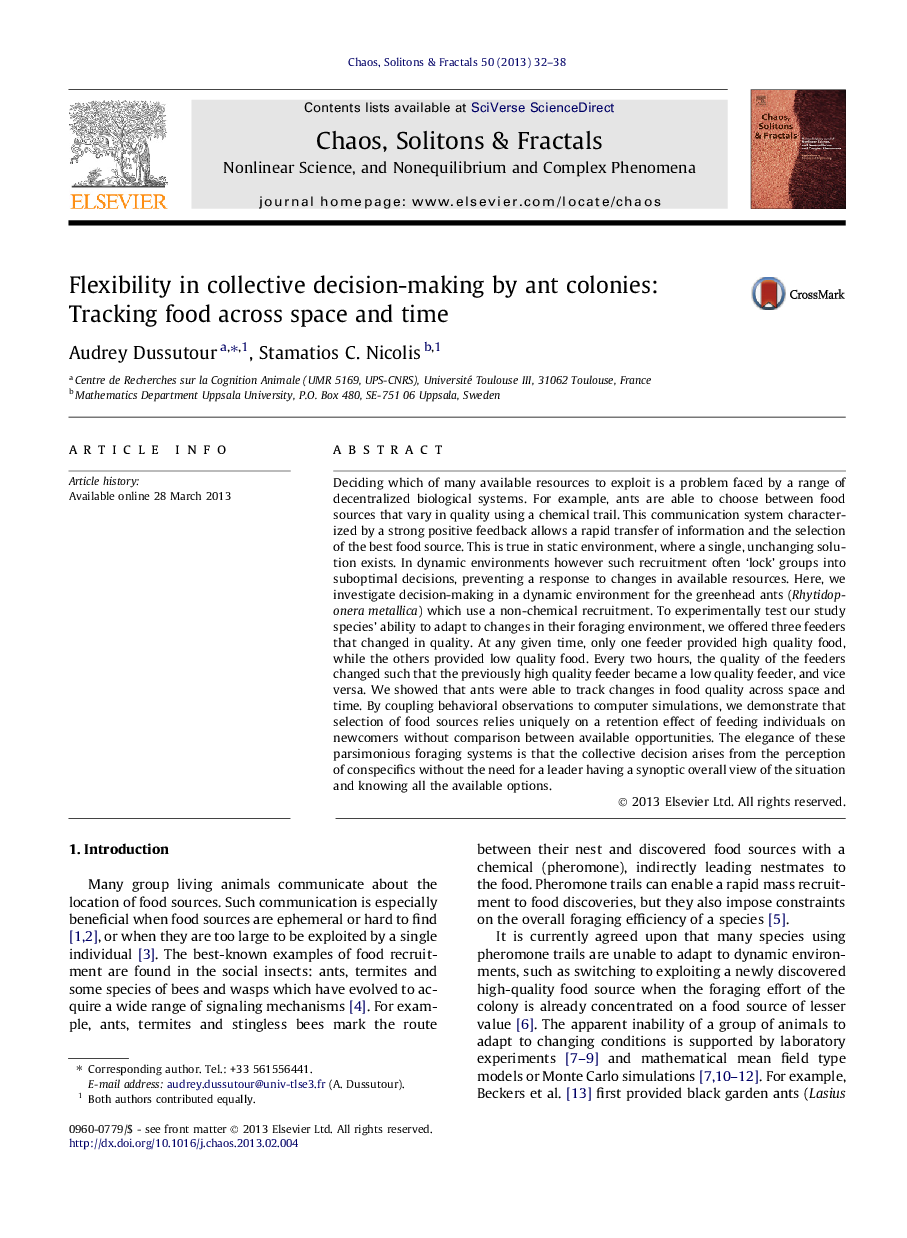| Article ID | Journal | Published Year | Pages | File Type |
|---|---|---|---|---|
| 8255266 | Chaos, Solitons & Fractals | 2013 | 7 Pages |
Abstract
Deciding which of many available resources to exploit is a problem faced by a range of decentralized biological systems. For example, ants are able to choose between food sources that vary in quality using a chemical trail. This communication system characterized by a strong positive feedback allows a rapid transfer of information and the selection of the best food source. This is true in static environment, where a single, unchanging solution exists. In dynamic environments however such recruitment often 'lock' groups into suboptimal decisions, preventing a response to changes in available resources. Here, we investigate decision-making in a dynamic environment for the greenhead ants (Rhytidoponera metallica) which use a non-chemical recruitment. To experimentally test our study species' ability to adapt to changes in their foraging environment, we offered three feeders that changed in quality. At any given time, only one feeder provided high quality food, while the others provided low quality food. Every two hours, the quality of the feeders changed such that the previously high quality feeder became a low quality feeder, and vice versa. We showed that ants were able to track changes in food quality across space and time. By coupling behavioral observations to computer simulations, we demonstrate that selection of food sources relies uniquely on a retention effect of feeding individuals on newcomers without comparison between available opportunities. The elegance of these parsimonious foraging systems is that the collective decision arises from the perception of conspecifics without the need for a leader having a synoptic overall view of the situation and knowing all the available options.
Related Topics
Physical Sciences and Engineering
Physics and Astronomy
Statistical and Nonlinear Physics
Authors
Audrey Dussutour, Stamatios C. Nicolis,
